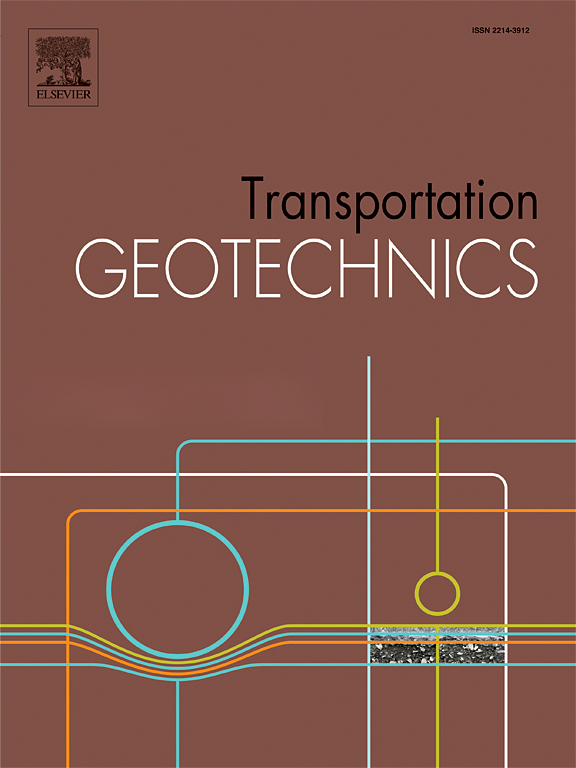Predicting ground vibrations induced by high-speed trains on the inhomogeneous soil
IF 4.9
2区 工程技术
Q1 ENGINEERING, CIVIL
引用次数: 0
Abstract
Ground vibrations generated by high-speed train operations have raised significant environmental concerns. Conventional methods for predicting train-induced ground vibrations typically assume that soil layers are homogeneous. However, soil layers undergo various geological processes that result in significant variability in soil properties over short spatial extents. This paper therefore proposes an efficient method for predicting ground vibrations from high-speed trains while accounting for spatial variability in soil properties. A semi-analytical deterministic model is introduced to simulate the coupled train-track-ground system. Dynamic responses of stratified soils are calculated using the thin layer method (TLM) – perfectly matched layer (PML). The TLM is employed to simulate finite-depth soil layers, while the PML is applied to account for wave attenuation in the underlying half-space. Train-induced ground vibrations in the frequency-spatial domain are calculated by analytically solving the inverse Fourier transforms with respect to the wavenumbers, leading to a high computational efficiency. The model’s accuracy is validated through comparison with existing methods. Vertical variability in soil properties is simulated using the TLM in conjunction with Karhunen-Loève (K-L) expansion. Numerical results indicate that local soil inhomogeneity can significantly impact the prediction of train-induced ground vibrations, resulting in changes in vibration levels of approximately 30 dB. As soil depth and degree of variation increase, the uncertainty in vibration predictions also increases. Therefore, it is crucial to consider soil inhomogeneity when predicting ground vibrations induced by high-speed trains.
求助全文
约1分钟内获得全文
求助全文
来源期刊

Transportation Geotechnics
Social Sciences-Transportation
CiteScore
8.10
自引率
11.30%
发文量
194
审稿时长
51 days
期刊介绍:
Transportation Geotechnics is a journal dedicated to publishing high-quality, theoretical, and applied papers that cover all facets of geotechnics for transportation infrastructure such as roads, highways, railways, underground railways, airfields, and waterways. The journal places a special emphasis on case studies that present original work relevant to the sustainable construction of transportation infrastructure. The scope of topics it addresses includes the geotechnical properties of geomaterials for sustainable and rational design and construction, the behavior of compacted and stabilized geomaterials, the use of geosynthetics and reinforcement in constructed layers and interlayers, ground improvement and slope stability for transportation infrastructures, compaction technology and management, maintenance technology, the impact of climate, embankments for highways and high-speed trains, transition zones, dredging, underwater geotechnics for infrastructure purposes, and the modeling of multi-layered structures and supporting ground under dynamic and repeated loads.
 求助内容:
求助内容: 应助结果提醒方式:
应助结果提醒方式:


